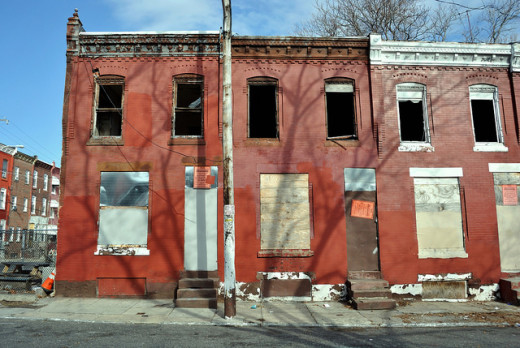Read the start of this article below; to view full article you need to be a PlannersWeb member. Already a member? — be sure you’re logged-in. Not a member? Consider joining the PlannersWeb.
“Blight” has gradually elevated to crisis mode in many cities and suburbs throughout North America. The housing recession and resulting sharp rise in foreclosures deepened concerns about vacancy and blight in many residential neighborhoods. It has also become commonplace in most American cities to pass vacant retail strip centers or dead malls that have been abandoned.
Even entire distressed commercial corridors have lost their vibrancy due to factors such as development outpacing demand, the e-commerce revolution, shifting population, or a new ill-conceived highway.
Public and political dialog has finally begun to focus on the prevalence and impact of abandoned blighted properties on our communities. Anti-blight declarations have become the political equivalent of elected officials declaring that they are against crime and for education.
The prevalence of blight is staring us in the face and forcing community leaders to begin addressing the problem.
Blight can be a relative term and is often overused to describe vacant property that is simply boarded-up. The Merriam-Webster Dictionary defines “urban blight” in terms of a deteriorated condition which impairs or destroys. It becomes a long and complicated story to frame all of the causes of property abandonment and resulting blight, but regardless, the prevalence of blight is staring us in the face and forcing community leaders to begin addressing the problem.
The Cost of Blight
Blighted abandoned property can be a danger to the public and lead to an increase in crime. This is sometimes expressed as the “broken windows theory — the effect of urban disorder and vandalism triggering additional crime and anti-social behavior. Blight has a negative effect on surrounding property values, which not only hurts adjacent property owners but reduces local property tax revenue.

The City of Philadelphia has researched and documented the costs of blight. A 2010 city-commissioned study, “Vacant Land Management in Philadelphia: The Costs of the Current System and the Benefits of Reform,” shed light on the steep economic toll long-term vacant and abandoned properties can have. The results are not good news for either property owners or city officials.
Among the report’s key findings:
… to read the rest of the article you need to be a PlannersWeb.com member. If you’re already a member, be sure you’re logged in (use the box in the upper right-hand corner of the page).
You must be logged in or a PlannersWeb member to read the rest of the article.